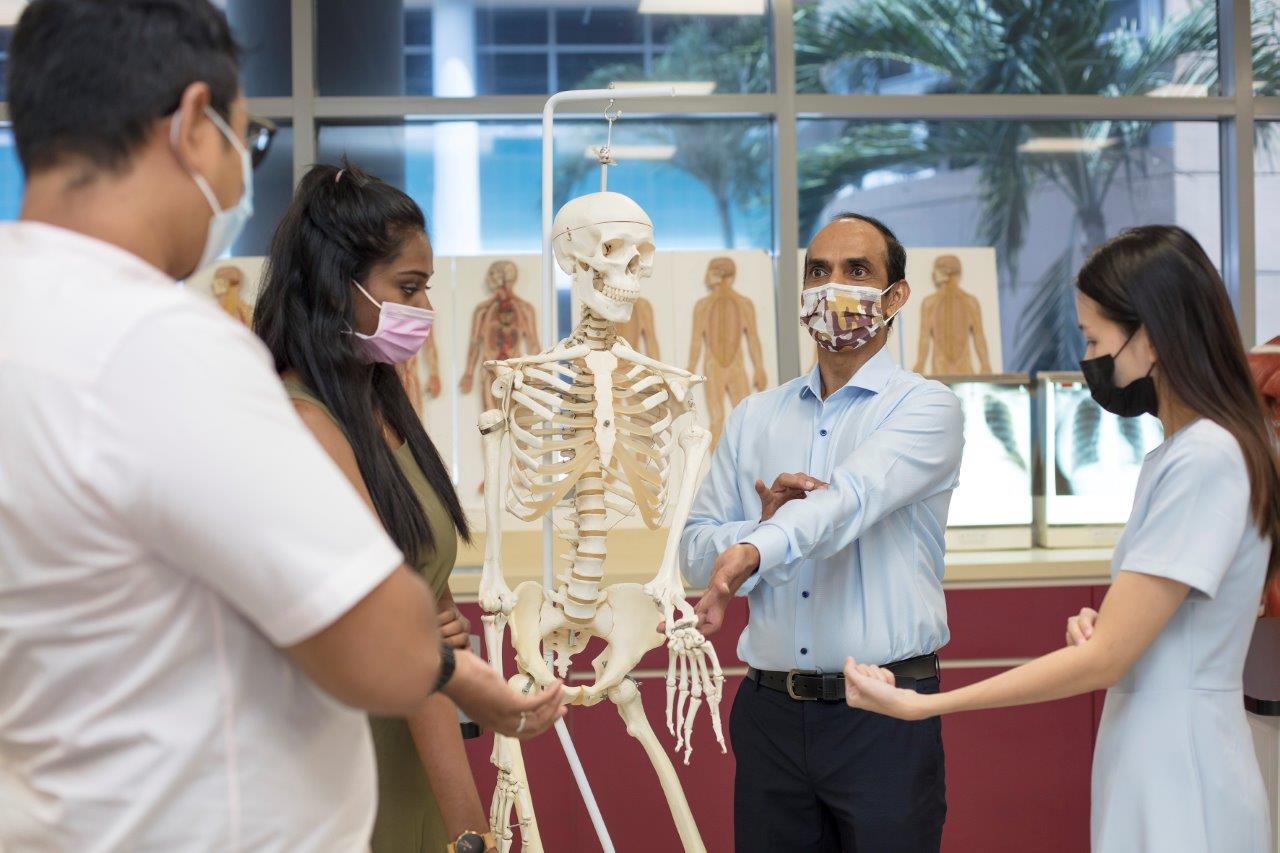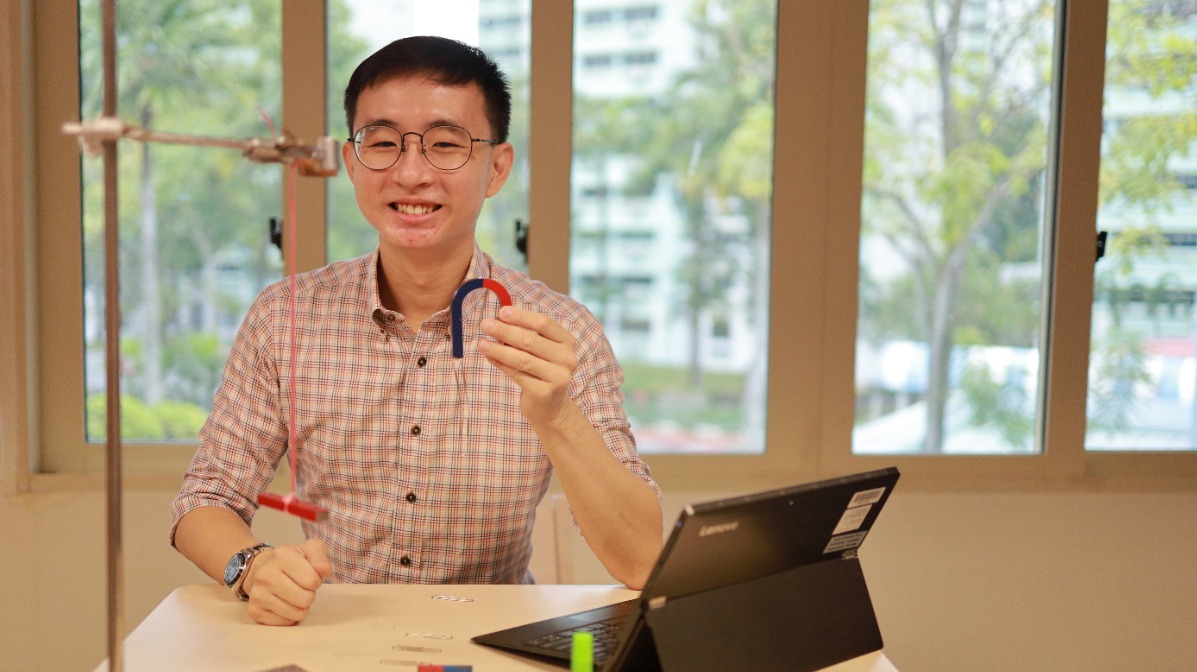Ramanujam Paramanantham, Nanyang Polytechnic, President’s Award for Teachers 2021 Finalist
As a young general practitioner in India in the 1980s, Dr Ramanujam Paramanantham observed how appreciative his patients were when he took pains to explain their health issues in ways they could understand. Some three decades on, after doing his PhD in Singapore and moving into teaching, he is doing the same for his students, explaining complex concepts in ways that help them learn better.
Dr Param not only “diagnoses” their issues but is also a bit of a gadget guy when deploying technology and other alternative ways to solve a problem.
“It’s a combination of curiosity as well as need,” said Dr Param, who credits his medical training for the observation skills he applies in his classroom at Nanyang Polytechnic. “As students ask questions and construct their knowledge, I can see that there are a lot of ways that teaching can be improved in terms of content as well as delivery. Then I go and explore the tools available.”
In Anatomy class, for instance, he noticed his students struggling to understand concepts about muscles, the same way he did as a medical student. A brainwave came and he brought a piece of rope to class the next day and attached it to the skeleton model, demonstrating how muscles pulled bones across joints.
“This made all the difference to them,” he shared enthusiastically. “Where the students hadn’t been able to wrap their heads around just how this action was carried out when I had explained it to them verbally, they were now not only able to understand the concept comprehensively, but also went on to apply it to other areas of the module.”
Fascination with tech-enabled learning
Physical demonstrations are good but technology has been Dr Param’s true ally in improving lesson delivery and student engagement. He often spends weekends poring over books and attending courses on this, and even dabbles in programming.
When he noticed that some of his students were too shy to participate actively in class, he researched and found Padlet, an online bulletin board that is useful for sharing ideas, comments and all kinds of multimedia content. He then incorporated it into Blackboard, a Learning Management System. Without needing to speak up, his students were more willing to chime up during class through the platform and could “pose all the questions they have there”, said Dr Param.
He is also a fan of online learning materials, which allow students to learn at their own pace, and complement in-person classroom interactions.
For example, when his students struggled to visualise microscopic structures such as the human cell, he used Articulate 360, an e-learning tool, to help bring the points to life. The tool allows him to create interactive learning materials combining videos, images and 3D visuals. To jazz things up further, he embedded quizzes and developed drag-and-drop activities and student surveys.
The buzz of response from these activities was encouraging, and Dr Param attributed it to how well the platform suited an adolescent demographic.
Youth-inspired improvements
When Dr Param looked into better ways to engage his students, it did not stop at platforms and formats. He also thought about the language they relate better to.
In 2020, when he deployed an analytics tool to collect student feedback easily after each lesson, instead of settling for the usual satisfaction scale, he opted for a more casual set of responses that had been created by a colleague.
For example, when asked for “My learning experience for this topic”, students pick their answer from “super”, “easy peasy”, “very cheem (Singlish for “complex”) but I roughly get it”, all the way to “alamak, (Malay expression of exasperation) I’m confused”. Besides having fun with their replies, students can also ask questions on the topic.
Teachers are finding the insights gathered useful for lesson planning. Dr Param’s Assessing Learning in Real Time (ALERT) is now used in about 10% of the modules at the School of Health and Social Sciences; he aims for a 100% roll-out by December 2021.
A year after launching ALERT in the School of Health and Social Sciences, Dr Param is piloting EXSERLAN, or Extensible Seamless Real-time Learning Analytics. This time, the tool collects real-time feedback from students during the lesson, making their observations – and the teachers’ responses – even more accurate and to the point. For Dr Param, it informed him exactly which topic he had to spend more time on.
Preserving the integrity of remote assessments
While Dr Param is passionate about helping his students, he is equally enthusiastic about applying technology to work processes.
One such area is online assessments, which also feeds nicely into how students like to communicate electronically these days, while cutting down on paper use too.
Since late 2019, he has been looking into ways to conduct e-assessments securely. The exploration was timely; when the pandemic struck and students had to sit for tests remotely, Dr Param was ready to launch the Respondus Lockdown Browser across the School of Health and Social Sciences.
When tests are administered with this tool, he explained, students cannot use keyboard shortcuts, open new tabs to look for answers nor copy and paste from the Internet, thus preserving the integrity of the answers. To further help with invigilation, an additional tool can monitor the assessment environment and help the teachers pick up on the students’ movements.
Today, the Respondus Lockdown Browser is mandatory for online assessments in all schools across Nanyang Polytechnic, and the assessment procedure has been shared with other polytechnics and ITE.
He acknowledges that educational technology can be daunting and take practice before use.
To this end, he conducts training sessions and informal consultations for his colleagues to help with questions and deployment. He shared, “When they appreciate my efforts, that gives me motivation to go further and do more.”







